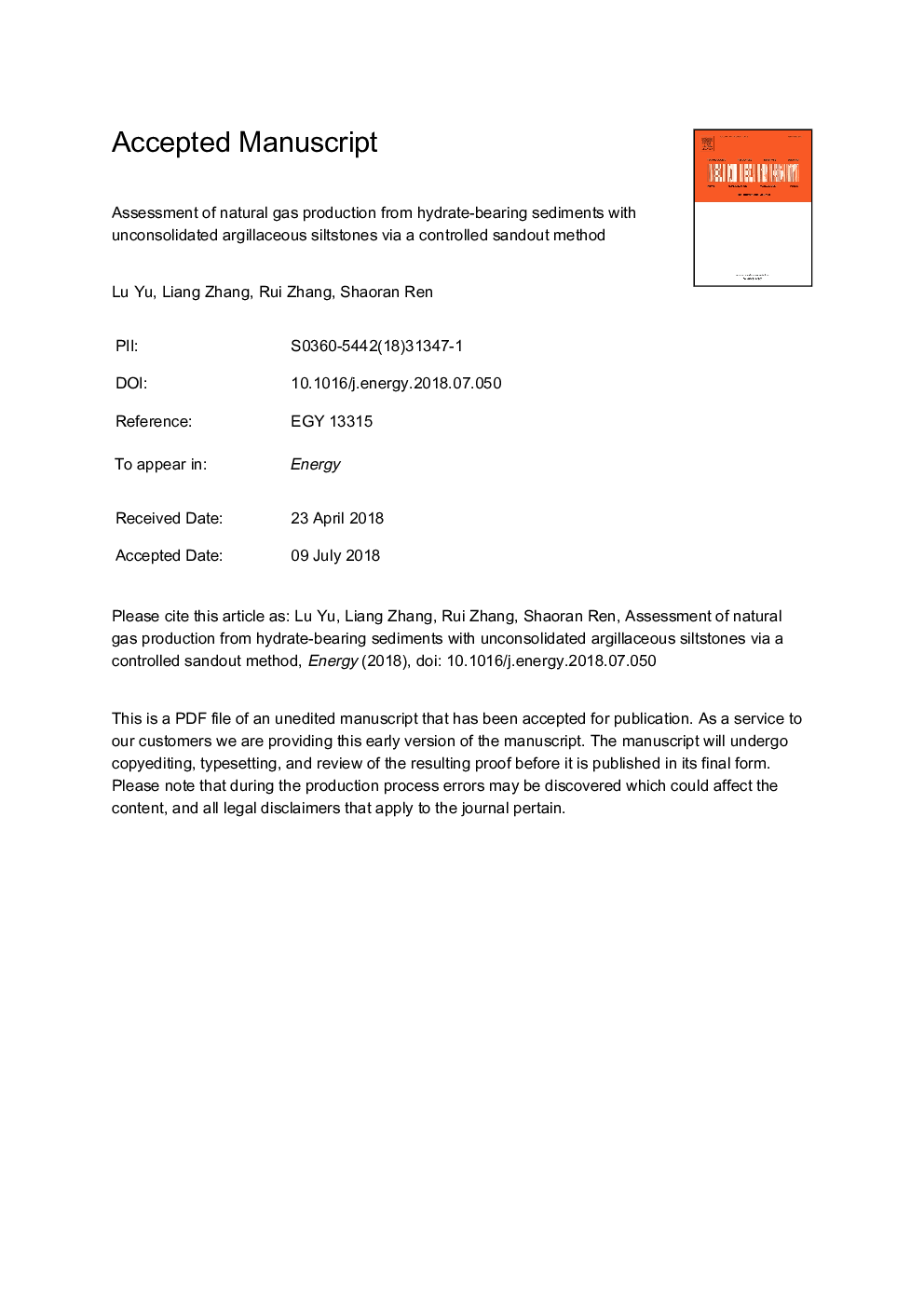| Article ID | Journal | Published Year | Pages | File Type |
|---|---|---|---|---|
| 8070978 | Energy | 2018 | 39 Pages |
Abstract
Many hydrate-bearing sediments are featured with unconsolidated argillaceous siltstones, which can pose a great challenge for gas production due to the migration of fine clay and silt particles (or sandout) that can restrict sustainable gas flow. In this study, based on the geological characteristics of unconsolidated argillaceous siltstones in typical subsea sediment, a controlled sandout or limited sand production method was proposed and a mathematic model was established to simulate the multi-phase flow of sand-hydrate-gas-water in the process of gas production from hydrate reservoirs. The gas productivity and sand production have been assessed with different sand control design criteria. The simulation results indicate that sandout or sand control is critical for sustainable gas production from hydrate-bearing argillaceous siltstone sediments. An improper sand control design criteria (e.g. using large screens) can induce substantial silts migration and led to clay clogging in near well formations, restricting gas production capability. The accumulated gas production of a single well in a 5-year period with sand control design criteria of 6â¯Î¼m can be only 8.17â¯Ãâ¯106sm3, while it can reach over 23â¯Ãâ¯106sm3 when a proper sand control design criteria is applied.
Related Topics
Physical Sciences and Engineering
Energy
Energy (General)
Authors
Lu Yu, Liang Zhang, Rui Zhang, Shaoran Ren,
